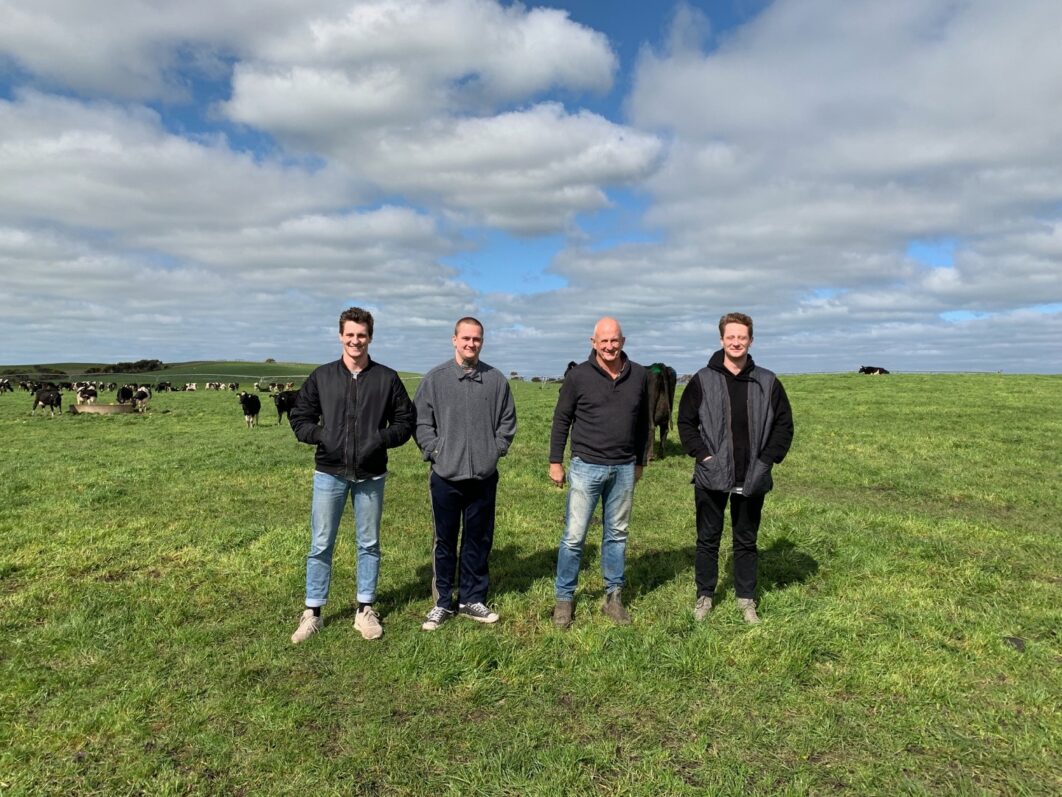With seven dairy farms in South Australia’s south east and a new farm in Gippsland, Victoria, Chris Procter is one of South Australia’s largest dairy farmers.
The Mount Gambier-based farmer, originally from New Zealand, has no plans to slow down, with three sons also involved in the family business.
Chris says while operations are left up to farm managers, the philosophy of always producing high quality milk is embedded across the farms.
He has different management structures for each of the farms, with 50/50 share milkers, contract milkers and managers responsible for the day-to-day operations at each property. This extends to responsibility for milk quality and food safety.
“The share farmers or managers are responsible for the cows, the food, the water – everything at the property – and so it makes sense that they are also responsible for milk quality. It’s written in the contracts,” Chris says.
“If there is a quality downgrade that they are directly responsible for, then that penalty gets taken out of their side, because they’re the ones who are responsible for the day-to-day milking and for putting quality milk into the vat.”
The farms supply Union Dairy Company (UDC) and Chris has made it clear across the properties that UDC is only interested in a high-quality product.
“All the share farmers have been through the UDC plant in Penola, which also emphasises the size of the supply chain and the need for quality milk products,” Chris says.
“With all of our suppliers, whether that’s an equipment supplier or a chemical company, it’s the relationship between the manager or share farmer and the service provider that key. There needs to be good communication and an understanding of what we’re trying to achieve.”
Chris says the relationship with UDC is a very close one. “We get the UDC field officers out to the properties to check things,” he says. “And we’ve put cameras around the plants to look for issues that could cause a greater problem if they get out of hand.”
When purchasing a property, Chris looks for simplicity of the dairy system, access to water and profit potential.
“We’ve got simple systems and processes in place across our farms so that all the people that work on the farm understand what’s going on,” Chris says.
“We insist on excellent record keeping. We insist on clean, tidy and well-presented farms. On some of the farms, we’ve spent a lot in terms of getting the milking shed right. The operating system must make it easy for the people and easy for the cows. I’ve spent $200,000 this past year on a couple of the farms just updating and improving the systems.”

Chris says milk standards have improved dramatically over his time in the industry.
“I’ve seen huge changes in terms of the milk quality. There are still the same issues, like reducing temperature quickly and so on, but the quality of the milk has never been higher,” Chris says.
“When I started in the dairy industry in New Zealand in the early 1980s I don’t think anyone had even heard of somatic cell counts. Levels at that time were up around 500,000 somatic cells per mL. Over time, the levels have dropped dramatically to about 200,000 cells per mL, depending on which company you supply.”
To encourage a continuous push for high quality, Chris has introduced a number of awards including an award for the person who achieves the lowest count of somatic cells for the year across all the farms.
He takes great pride in his pasture-based farming systems, which he says can also provide a marketing edge.
“We’re not in a feedlot farming system, the cows are out in the open 24/7. There’s a very small percentage of milk around the world that’s from a true pasture system, so we have a real selling point here in South Australia,” he says.
“We’re lucky in South Australia to have the space and the climate for producing such high-quality milk.
“When you look at food around the world, there’s big trend for farming cleaner and greener, and consumers want to know where the food is coming from. Gone are the days when you forget about the milk once it leaves the front gate.”
With eight farms now in the business and demand for milk soaring, Chris is feeling confident about the future.
“If you look around the world, there’s a huge demand for dairy. That demand is still growing, much of it driven out of Asia, dominated by demand in China, but also countries like Indonesia,” he says.
“We’re in a good situation here, dairy farming in Australia, especially when you look around the world and look at the demand and maybe a little bit of a retraction on the supply side from some countries. And farmers should be happy with the milk prices at the moment!”